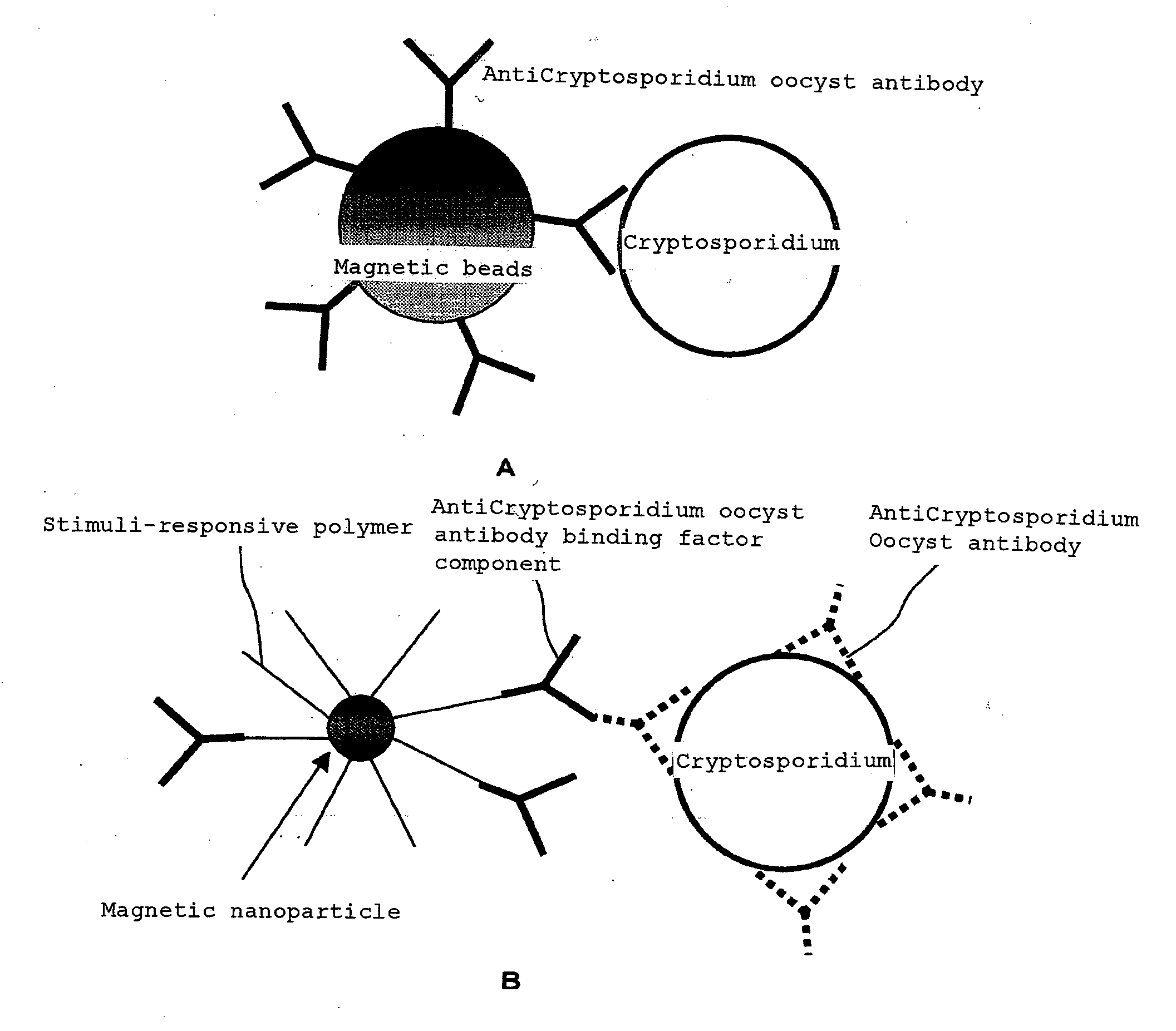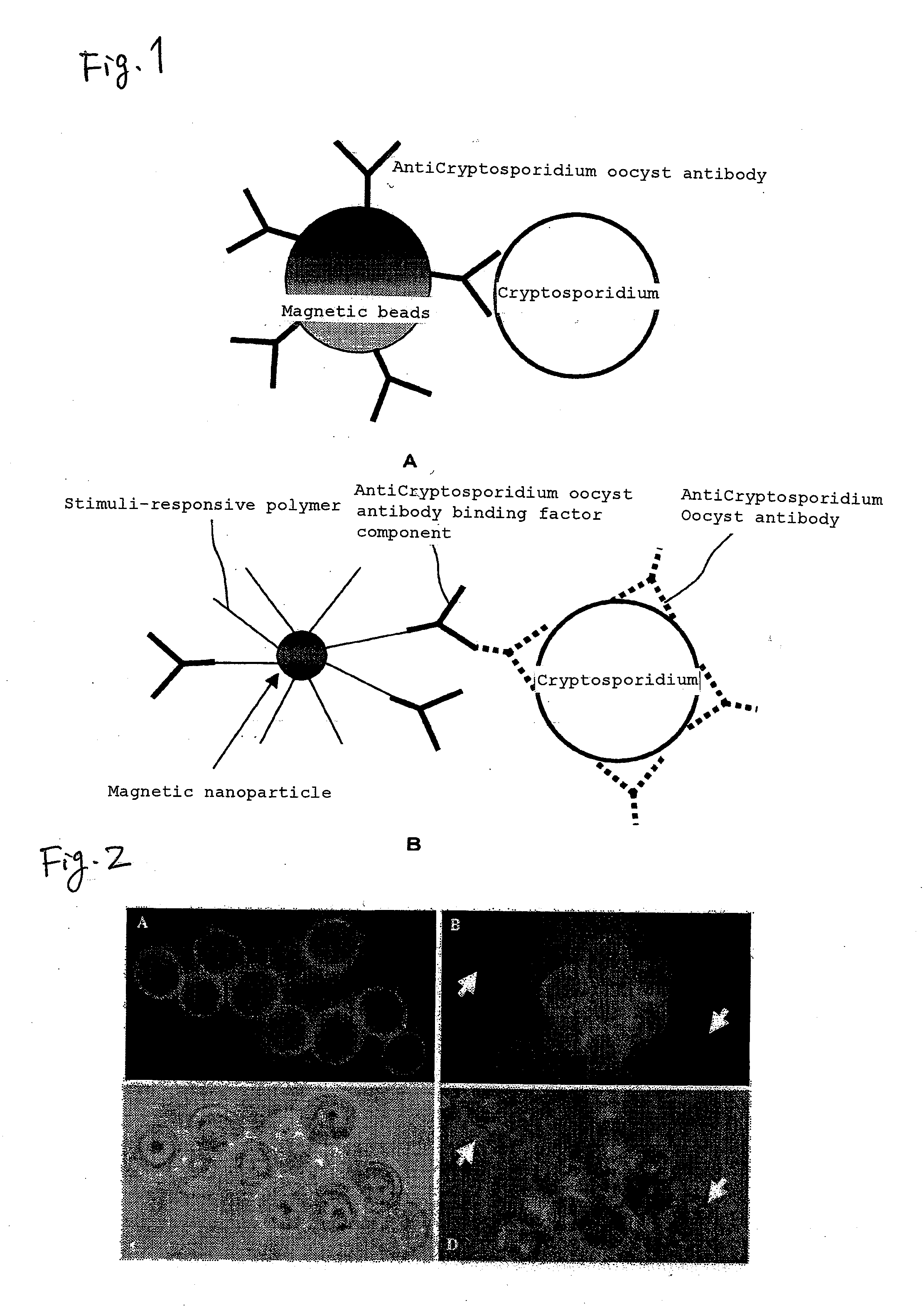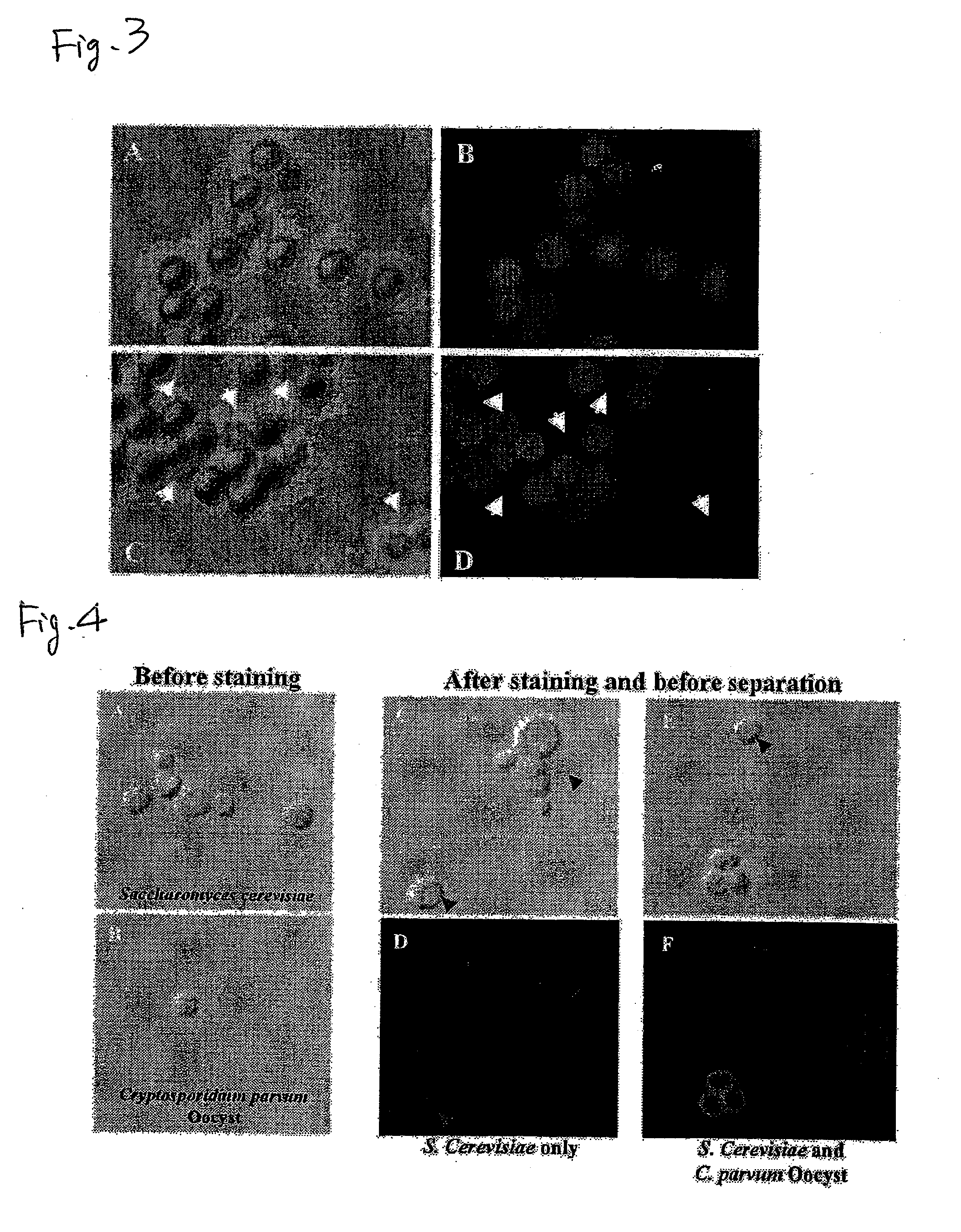Method For Measuring Protozoan Oocyst and Detecting Reagent
a protozoan oocyst and reagent technology, applied in the field of protozoan oocyst and reagent measurement, can solve the problems of inability to completely destroy the oocyst in water by usual water purification treatment, inability to completely recover the oocyst in environmental samples, and inability to infect humans. , to achieve the effect of high accuracy
- Summary
- Abstract
- Description
- Claims
- Application Information
AI Technical Summary
Benefits of technology
Problems solved by technology
Method used
Image
Examples
example 1
[0082]Detection of Cryptosporidium Oocyst Using UCST-Type Thermo-Responsive Magnetic Nanoparticles
(i) Preparation of Standard Solution of Cryptosporidium Oocyst
[0083]A 500 μl portion of a commercially available standard reagent of Cryptosporidium parvum oocyst (Waterborne™, Inc., 1.25×106 / ml) was placed in a 1.5 ml tube, followed by centrifugation (10000 rpm) at room temperature for 5 minutes. After removal of the supernatant under suction, 0.5 ml of TBST buffer (20 mM Tris-HCl, 150 mM NaCl, 0.05% by mass Tween 20, pH 7.5) was added to the tube and the whole was subjected to vortex stirring. Furthermore, a commercially available immunofluorescent labeling reagent FITC-Anti-Cryptosporidium IgM (mAb) (Waterborne™, Inc., A400FLR-20X) was added in an amount which is 1 / 2000 of the liquid volume, followed by a reaction at room temperature for 10 minutes. Thereafter, 2 μl (KPL 0.5 ug / μl) of a commercially available biotinylated antimouse anti-IgM secondary antibody (IgG), followed by a rea...
example 2
Comparison of Separation Efficiency Between UCST-Type Thermo-Responsive Magnetic Nanoparticles and Conventional Micron-Size Magnetic Beads
(i) Preparation of Sample
[0097]After 1.68×10, 1.68×102, 1.68×103 or 1.68×104 oocysts of a commercially available standard reagent of Cryptosporidium parvum oocysts (Waterborne™, Inc., 1.25×106 / ml) in 500 μl of TBST buffer was added to a tube, a Cryptosporidium oocyst / antiCryptosporidium oocyst fluorescent antibody / antifluorescent antibody biotinylated antibody / avidin complex was formed according to Example 1. Thereafter, in accordance with Example 1, the above complex was reacted with biotinylated UCST-type thermo-responsive magnetic nanoparticles to separate Cryptosporidium oocysts. A finally recovered substance was suspended into 50 μl of a TBST buffer solution and the number of Cryptosporidium oocysts recovered was investigated on each sample.
(ii) Detection of Cryptosporidium Oocysts
[0098]In all the four samples, the equal number of oocysts to ...
example 3
[0103]Separation of Cryptosporidium Oocysts From a Mixed Liquid with Yeast Cells with UCST-Type Thermo-Responsive Magnetic Nanoparticles
[0104]Fluorescent staining of Cryptosporidium oocysts was attempted in the presence of an excess amount of yeast cells (Saccharomyces cerevisiae). Into 500 μl of TBST buffer were mixed 1×106 yeast cells (see FIG. 4A, which is a bright-field microscope photograph of yeast cells before immunofluorescent labeling) and 3×105 Cryptosporidium oocysts (see FIG. 4B, which is a bright-field microscope photograph of oocysts before immunofluorescent labeling). Then, 50 μl of a commercially available immunofluorescent labeling reagent FITC-Anti-Cryptosporidium IgM (mAb) (Waterborne™, Inc., A400FLR-20X) diluted to 1 / 2000 was added, thereby fluorescent labeling was conducted. Centrifugation at room temperature for 1000 rpm for 5 minutes was conducted and then the precipitate was recovered and the supernatant was discarded. Further, TBST buffer was added and the w...
PUM
| Property | Measurement | Unit |
|---|---|---|
| particle diameter | aaaaa | aaaaa |
| diameter | aaaaa | aaaaa |
| specific gravities | aaaaa | aaaaa |
Abstract
Description
Claims
Application Information
 Login to View More
Login to View More - R&D
- Intellectual Property
- Life Sciences
- Materials
- Tech Scout
- Unparalleled Data Quality
- Higher Quality Content
- 60% Fewer Hallucinations
Browse by: Latest US Patents, China's latest patents, Technical Efficacy Thesaurus, Application Domain, Technology Topic, Popular Technical Reports.
© 2025 PatSnap. All rights reserved.Legal|Privacy policy|Modern Slavery Act Transparency Statement|Sitemap|About US| Contact US: help@patsnap.com



